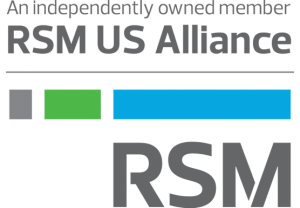Insights
Policy cliffs approaching as economy slows
INSIGHT ARTICLE |
Authored by RSM US LLP
Download The Real Economy Vol. 68
While we anticipate that Congress will approve a fifth round of fiscal aid to support the economy as the pandemic intensifies, it is now clear that this aid will not be put in place in time to prevent an air pocket in the economy later this summer.
The lapse in aid to 20 million Americans that pumped roughly $116 billion into the economy in June alone will result in a slower rebound in overall economic activity during the current quarter. That puts at risk our forecast of a 14.2% increase in U.S. gross domestic product in the third quarter.
Through the first week of July, households at the bottom of the income ladder—the three lower-income quintiles— have reduced their spending by only 1.9% compared to the 10.8% reduction among upper-income households and 6.8% overall.
This goes directly to the heart of why fiscal aid was targeted at the unemployed—40% of households making under $40,000 per year have experienced job and income losses—rather than to the employed through tax cuts. It shows just how critical that aid is to supporting the economy. Absent a sufficient round of aid, investors should anticipate a significant slowing in household spending and another round of permanent job losses.
The last thing the economy, which began to level off in late June as the pandemic began to cause pullbacks, needs is a policy-induced downturn leading to rising unemployment and a slower pace of consumer spending.
MIDDLE MARKET INSIGHT Although we think the worst of the economic shock is in the rearview mirror, this economy is not yet out of recession and could very well remain in negative terrain if there is not sufficient policy support.
While bills for subsequent relief legislation move through Congress, the additional $600 per week aid to the unemployed under the Federal Pandemic Unemployment Compensation expired on July 25, just one day after the end of the federal moratorium on evictions, which puts at risk roughly 22 million people.

At best, we think that there will be no legislation on this until mid-August, with a substantial delay in actual payments showing up in pocketbooks.
We cannot overemphasize just how important the next several weeks are for the domestic economic outlook. Beyond the expiration of the eviction moratorium, foreclosure moratorium and unemployment assistance, Aug. 8 represents the final day to apply for Paycheck Protection Program loans despite $132 billion remaining on the books.
Moreover, the hole that has been blown in the balance sheets of state and local governments because of declining tax revenues will require direct aid from the federal government. The Center on Budget and Policy Priorities estimates that there will be a $110 billion shortfall in state and local budgets this year, $290 billion next year and $135 billion in 2022. One way to ensure a disappointing recovery or to cause a double-dip recession is to not address this critical issue.

It is important to note that Congress and the administration acted decisively by unleashing about $1.2 trillion into the economy between April and June. But those programs are set to expire, dropping by $1 trillion over the course of the next six weeks, as reported by The Washington Post.
So once again, a confluence of events—the expiration of programs designed to maintain income and consumer spending during the pandemic—could have disastrous consequences for households and a significant impact on the depth of the recession and the length of time before the economic recovery begins.
Why prop up the economy?
Americans’ real personal income (excluding government transfers) began its decline in March at the start of the staggering loss of employment, and then fell by 7% in April and 6% in May as shown in the first figure below. Without government support, Americans are seeing a major contraction in their incomes at a time when the pandemic is already causing consumers to constrict their spending.
More than 52 million people have filed for unemployment insurance benefits over the past 18 weeks, with the unemployment rate jumping to unprecedented heights in the postwar industrial era.
The following figure shows how the economic shutdown during the pandemic caused the unemployment rate to approach 15% of the labor force before dropping to 11.1% in June as local economies began to reopen.


But can we afford to prop up the economy?
The answer is yes, but that is probably the wrong question. The fact is that we the people are facing an existential threat not unlike the Spanish flu of 1918. The coronavirus pandemic has already claimed 650,000 lives worldwide and 150,000 in the United States, and that has happened in only six months. The right question, therefore, is can we afford to not prop it up?
As the figure shows and as we mentioned, the federal budget deficit typically improves during business cycle upswings (as tax revenues increase along with income levels) and then deteriorates during economic slowdowns (as workers are furloughed, social safety-net outlays increase and tax revenues decrease).
Since then, and because of the sudden increase in unemployed workers, the federal deficit has ballooned to 9% of GDP. But as the figure shows, that is nowhere close to the 27% deficits of the war effort in 1943.
The next figure shows that the federal debt is now greater than 100% of GDP, a level once reserved for Japan and its lost decade of growth. Overlooked, however, is that debt relative to the level of GDP has been increasing since the 1980s, first when welfare reform and supply-side economics became the raison d’être for for tax cuts, bringing about reductions in funds necessary to operate the government.
And by the second decade of this century, management focus had shifted to maximizing stock valuation, which benefited from the offshoring of manufacturing, followed by the offshoring of corporate profits to tax havens to reduce U.S. tax liabilities.
At this point, there is no empirical evidence that rising deficits crowd out investment or will cause interest rate shock, debasement of the dollar or a decrease in the use of the greenback as the world’s primary reserve currency. We estimate that given the shape of the yield curve, the United States is well positioned to tap global debt markets to support the economy as it transitions through a pandemic that has yet to run its course.

Let's Talk!
Call us at +1 213.873.1700, email us at solutions@vasquezcpa.com or fill out the form below and we'll contact you to discuss your specific situation.
This article was written by Joe Brusuelas and originally appeared on 2020-08-03.
2020 RSM US LLP. All rights reserved.
https://rsmus.com/economics/the-real-economy/the-real-economy-volume-68/policy-cliffs-approaching-as-economy-slows.html
RSM US Alliance provides its members with access to resources of RSM US LLP. RSM US Alliance member firms are separate and independent businesses and legal entities that are responsible for their own acts and omissions, and each is separate and independent from RSM US LLP. RSM US LLP is the U.S. member firm of RSM International, a global network of independent audit, tax, and consulting firms. Members of RSM US Alliance have access to RSM International resources through RSM US LLP but are not member firms of RSM International. Visit rsmus.com/about us for more information regarding RSM US LLP and RSM International. The RSM logo is used under license by RSM US LLP. RSM US Alliance products and services are proprietary to RSM US LLP.

Vasquez & Company LLP is a proud member of the RSM US Alliance, a premier affiliation of independent accounting and consulting firms in the United States. RSM US Alliance provides our firm with access to resources of RSM US LLP, the leading provider of audit, tax and consulting services focused on the middle market. RSM US LLP is a licensed CPA firm and the U.S. member of RSM International, a global network of independent audit, tax and consulting firms with more than 43,000 people in over 120 countries.
Our membership in RSM US Alliance has elevated our capabilities in the marketplace, helping to differentiate our firm from the competition while allowing us to maintain our independence and entrepreneurial culture. We have access to a valuable peer network of like-sized firms as well as a broad range of tools, expertise and technical resources.
For more information on how Vasquez & Company LLP can assist you, please call +1 213.873.1700.
Subscribe to receive important updates from our Insights and Resources.
